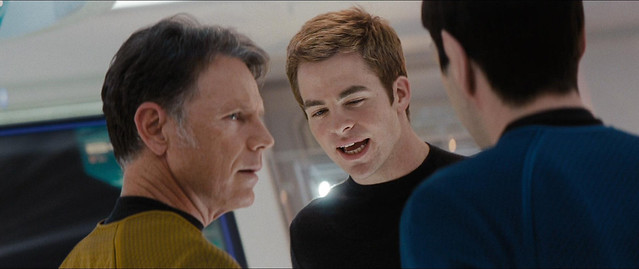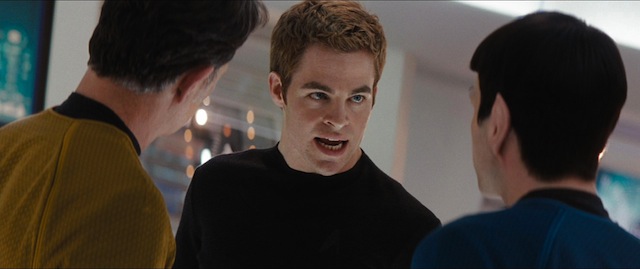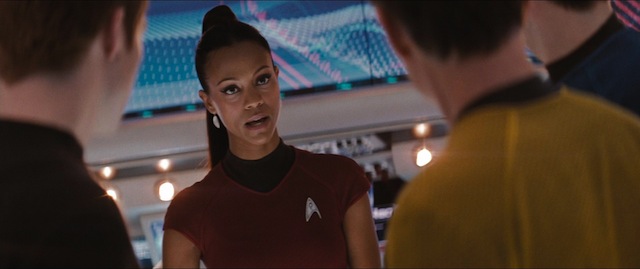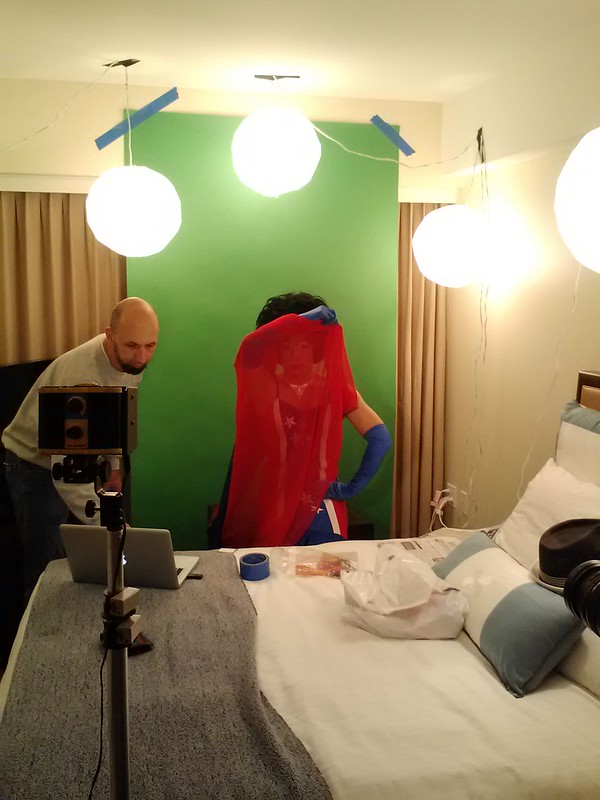I don't know how many of you will find this interesting, but tomorrow (Friday May 25th) I'm going to be doing a short pickup shoot for a short film. For those who are curious about the process, I think I'd share some of the emails and our Call Sheet as a reference. I'm gonna SPOILER CODE the bulk of this message for those who aren't so interested in how sausage is made.
End of sausage making.
Discussing requirements with the stage owner:
A follow-up regarding how much "set dressing" we are doing. This shoot is on greenscreen, so...Vic:
As per your request, I am ccing you on all correspondence with Benoit from here forward. He and I have discussed the schedule and technical needs. Please have a look below.
EQUIPMENT
QUESTIONS
- 8X8 green
- 12X as backup if 8X8 is insufficient (let us know if this is available)
- (3) Kinos
- (3) parabeams
- HD monitor
- Have you had had shoots this week which have left the studio prepped for sound and the stage clear?
- Will you or your Intern be IN? If not, shall I handle all ins and outs and space distribution?
- Can we use the downstairs bathroom to do makeup and hair?
- Can we make use of the 2 spaces at Little Giant's Lot? If yes, do you have directions and parking maps?
CREW
Going to a minimal crew here so as to allow us to get in and out fast.
CALL SHEET is live HERE, and will be updated as needed:
https://docs.google.com/spreadsheet/ccc?key=0Aowrri1Um4ttdHNFaVROYzIyd2tfNDMwMDRJUU1reVE
SCHEDULE
We'd like propose the following schedule:
- 8 am : Benoit
- 8.30 am : Maurice & Becky (Becky will let people in and out, etc. she'll also play script supe)
- 9 am: Richard (set dressing & props), Rachel (makeup), Heather (actress)
- 9:45 Sound, 2nd actor (off-camera)
- 10 am first shot
- 12:30 pm Wrap
- 1 pm OUT
CRAFT SERVICES = NONE
Folks bring their own coffee/water bottle so we don't have to stray in any non-stage areas except for downstairs bathroom. No snacks.
NOTES ON THE SHOOT
Setups
The character never moves from her spot behind the bar. As such, we should require only one lighting setup
We'll run the dialog in both closeups and medium closeups, and we might do a waist-up medium shot in one instance
2nd Actor
Required for eyelines and to have someone for Heather to play off
Makeup
We need a dedicated makeup person due to the complicated makeup and costume. Actress cannot do her own.
The actress can leave in makeup if that's more expedient, so the makeup person can reset the bathroom to One while we are shooting.
Trash
We pack out anything we bring in
Thanks again.
Here's the email sent to cast and crew.Guys:
Re the "set": there is none, really. The only set piece is a 3' section of bartop, and that's only used for one shot. It's merely a piece of black foamcore with a white semicircle on it. I planned to just set it on one of the hi-tops for the one setup it's used it (she mimics pouring a drink and slides it across the bar).
I am bringing one additional P.A. in case we need him for anything on in the event that someone else can't make it, but I've already told him I'll dismiss him if it turns out he's not needed.
Benoit: I will have my laptop there and even if we don't log and transfer on-site I will at least copy the cards to the laptop hard-drive and import them later.
Gonna try something different with the props this time. I made the bottle hot pink instead of black and white, so that I can isolate the color of the bottle and keep it distinct from the actress when the footage gets processed down to flat.
And, as per the email above, here's the CALL SHEET (link).Hi everyone, and thanks for your patience:
SCHEDULE
First off, if you click the following link...
http://tinyurl.com/GigiPickup
...you will see out call sheet for tomorrow's shoot. As this is a Google Doc I can update it from anywhere and not have to remail it. Please have a look at it again before bedtime tonight and again first thing in the morning in case there are any last minute changes.
LOCATION
In case you don't remember, The Producer's Loft is here:
http://www.theproducersloft.com/directions
PARKING
Parking in that area is not terrible on weekdays but it IS restricted to 2 hours on many streets and 1 hour on others. The Producer's Loft has two off-street spaces we can use. I'll need one, as I'll be there from 8:30 through shutdown (and I'll be transporting Richard and Jim). I was thinking of giving the other space to Heather and Rachel. If anyone wants to BART over, that's great since the studio is only a few blocks from the 24th Street station. If anyone wants to drive to my neighborhood and leave their car out here, I can transport one additional person. I also have a P.A. who will have his car and could help shuttle anyone who needs it, or could move someone's car for them after 2 hours if necessary. What I don't want is to have someone critical need to run out to move their car during the middle of shooting, especially given our tight schedule.
For whoever ends up with the parking spaces, here's where they are:
DIRECTIONS & PARKING - LITTLE GIANT LIGHTING & GRIP SPACES #9 & #10 ONLY.
http://theproducersloft.com/parking/LittleGiantParking.html
CAVEATS
Because we have such limited time to setup and clean-up, we're not going to have the customary craft services on set. I will provide bottled water. If you want to bring anything to nibble on, do so, but I ask that any snacking be done on the patio and that you pack out your own trash and not put it in the Producer's Loft rubbish. What we bring in leaves with us.
WRAP LUNCHIE?
For those who can hang around a bit after the shoot I'd love to have a bit of wind-down time with you after we "reset to one". Let me know if you can hang around and maybe we can find a nibble and/or a beer someplace.
Thanks in advance for everything!


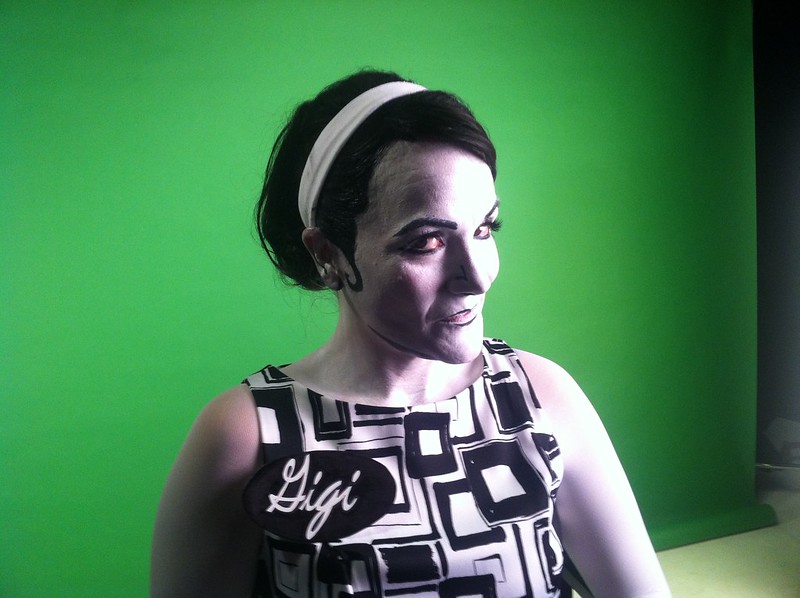
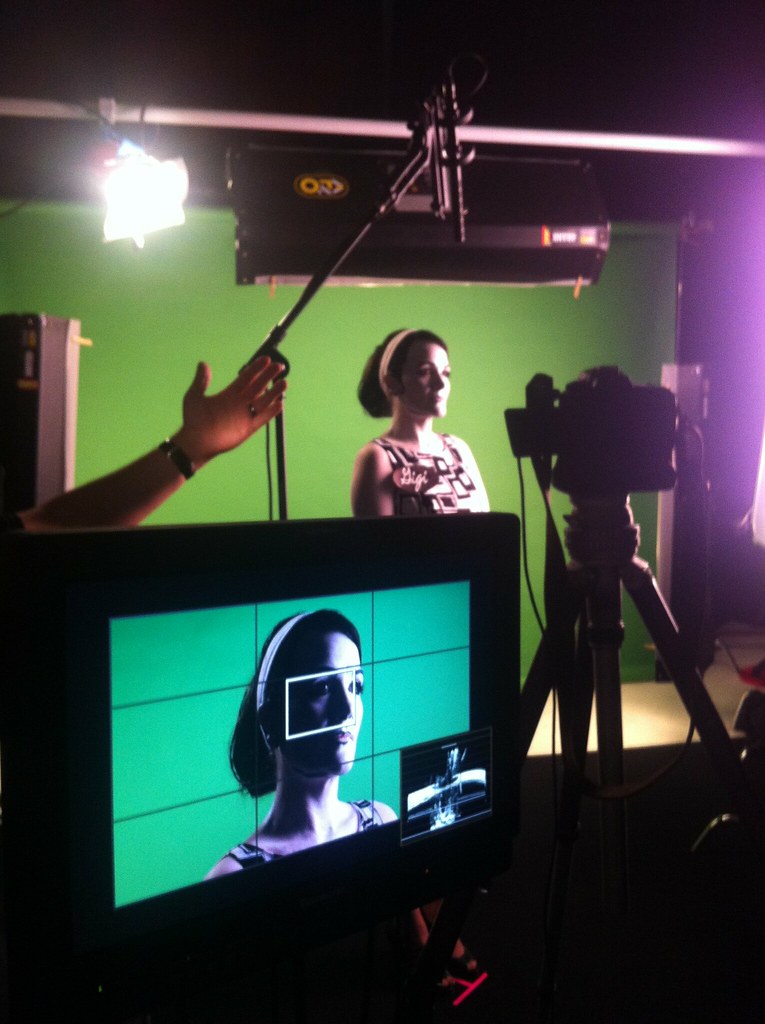
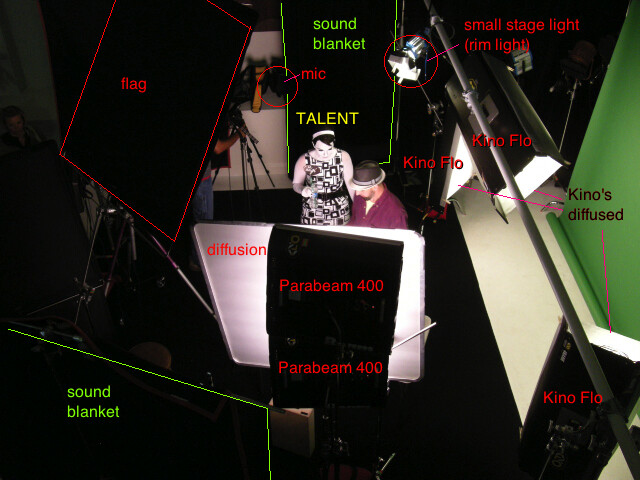
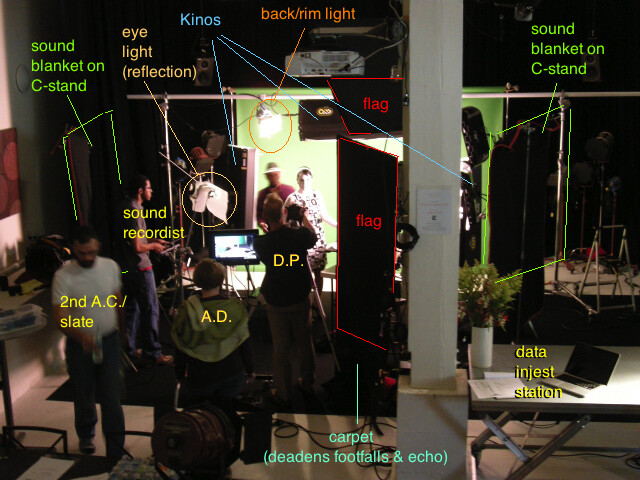
 ). It doesn't matter that some of the equipment is in shot because those will be cropped out with a garbage matte. The green merely has to be behind the items in the shot: in this case the actress, props and faux bartop.
). It doesn't matter that some of the equipment is in shot because those will be cropped out with a garbage matte. The green merely has to be behind the items in the shot: in this case the actress, props and faux bartop.



